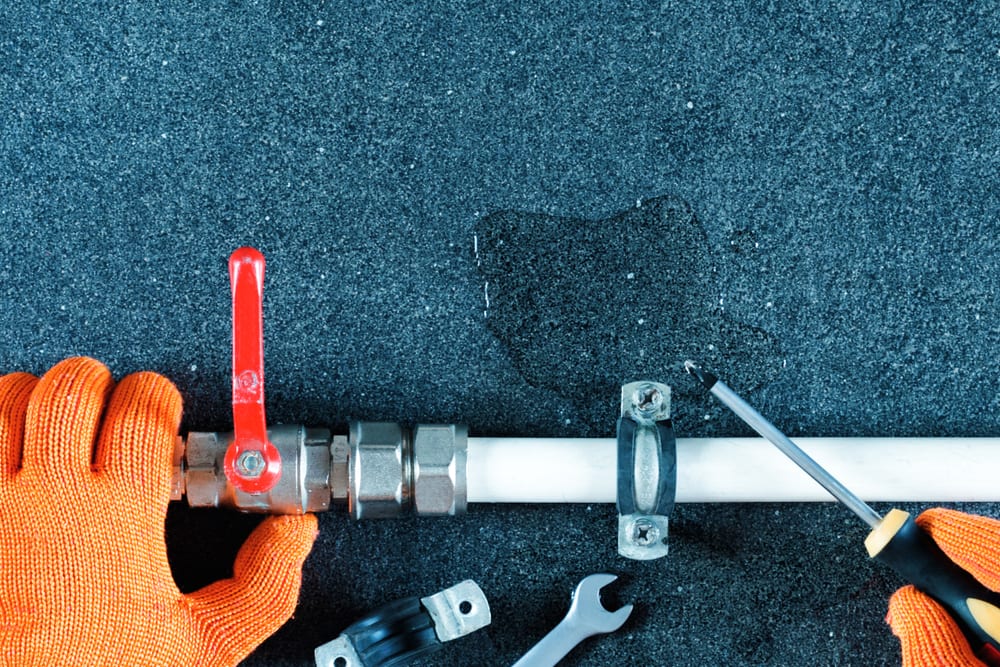Uncovering Concealed Water Line Leaks: 6 Effective Detection Hacks
Uncovering Concealed Water Line Leaks: 6 Effective Detection Hacks
Blog Article
Are you currently interested in advice about Hacks to detect leaks?

Early detection of dripping water lines can alleviate a prospective disaster. Some small water leaks might not be visible.
1. Check Out the Water Meter
Inspecting it is a guaranteed way that helps you find leaks. If it relocates, that shows a fast-moving leak. This implies you may have a slow-moving leakage that could also be underground.
2. Check Water Consumption
Examine your water bills as well as track your water intake. As the one paying it, you need to observe if there are any type of inconsistencies. If you find sudden changes, regardless of your usage being the same, it suggests that you have leaks in your plumbing system. Keep in mind, your water bill should drop under the exact same variety each month. An unexpected spike in your costs indicates a fast-moving leakage.
A steady boost every month, even with the exact same practices, reveals you have a slow leak that's also slowly intensifying. Call a plumber to completely check your home, particularly if you feel a warm area on your flooring with piping underneath.
3. Do a Food Coloring Test
When it comes to water intake, 30% comes from bathrooms. If the color in some way infiltrates your bowl during that time without flushing, there's a leakage between the storage tank and also dish.
4. Asses Exterior Lines
Don't neglect to examine your outside water lines also. Should water permeate out of the connection, you have a loose rubber gasket. One little leakage can waste lots of water and spike your water expense.
5. Examine as well as Evaluate the Scenario
Property owners need to make it a practice to inspect under the sink counters as well as also inside cupboards for any bad odor or mold development. These 2 red flags show a leakage so prompt attention is needed. Doing regular examinations, also bi-annually, can conserve you from a major problem.
If you understand your residence is already old, keep a watchful eye on your heating units, pipes, pipes and so on. Check for discolorations and also compromising as the majority of pipes and also devices have a life expectancy. They will certainly also naturally weaken because of tear and also wear. Don't wait for it to rise if you suspect dripping water lines in your plumbing system. Call a professional plumber as soon as possible so you do not wind up with an awful mess in your home.
Early detection of leaking water lines can mitigate a potential catastrophe. Some tiny water leakages may not be visible. Checking it is a surefire method that helps you uncover leaks. One small leak can lose lots of water and increase your water bill.
If you presume leaking water lines in your plumbing system, don't wait for it to intensify.
How to Know If Your Home Has a Hidden Leak
Water Meter Reveals Inexplicable Water Usage
If you’d like to test whether or not there’s a leak somewhere in your home, you can do this using your water meter. Here is how to conduct the test:
Don’t use any water in your home for at least 30 minutes; this also means not turning on faucets or water-using appliances.
Go outside, and check your water meter for activity.
If your water meter shows that there was activity, even though no one was using any water, this proves that there is a leak in your home.Visible Mold or Mildew Growth
Leaks behind walls create moist, dark environments that allow mold and mildew to grow and thrive. Eventually, you might see mold growth forming on the wall closest to a hidden leak.
If mold is growing in an area that receives a high amount of moisture, such as a bathroom, it may simply be an indication that better ventilation is needed. However, if you see mold growth on a wall or the ceiling in an area where you would not expect, you probably have a hidden leak.
Musty, Mildew Odor
Sometimes you might not be able to see the mold or mildew that is growing as a result of a leak. However, the smell can give the problem away just as easily. If you catch a whiff of something musty, there’s a good chance that old water is collecting somewhere in your home that you can’t see.
Stained/Warped Walls, Ceilings, or Floors
When your home soaks up water, a variety of red flags can become visible, including ceiling stains, bubbling drywall, warped walls, and sagging floors. While these issues can be caused by excess humidity, they can also be signs that a pipe or plumbing connection has started leaking behind your walls.
Inexplicably High Water Bill
After a while, you get a general sense for what your water bill should be. If you own a pool or sprinkler system, your bill will tend to be higher during summer. However, if you receive a water bill that seems especially high, and you can’t figure out what caused it, then you may have a hidden leak somewhere that’s increasing your bill.
https://www.plumbingjoint.com/blog/2019/july/how-to-know-if-your-home-has-a-hidden-leak/

I'm certainly very intrigued by Locating water leaks and I hope you liked our article. Do you know about another person who is in the market for the subject? Do not hesitate to share it. Thank you so much for your time invested reading it.
Overflow? We can help! Report this page